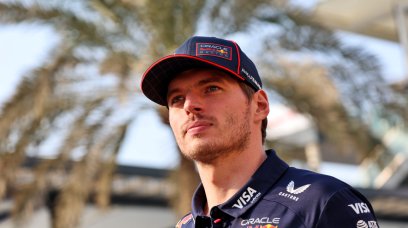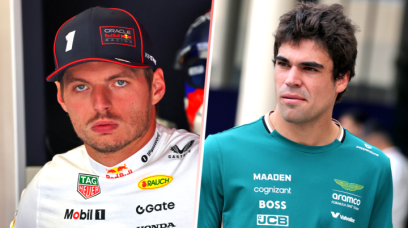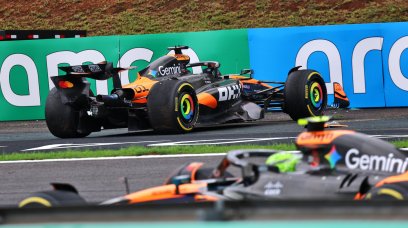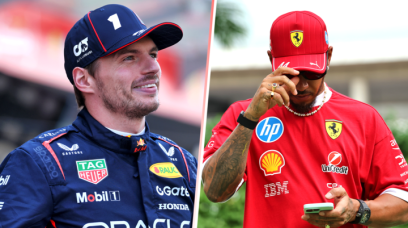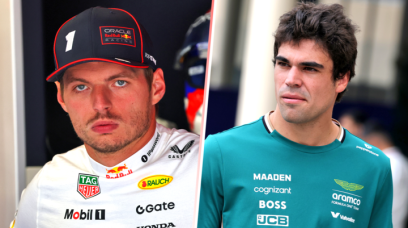The 2022 season marks the start of Formula 1's 'new era', hallmarked by the first set of regulations introduced under commercial rights holder Liberty Media, which worked closely with the FIA to ensure the resultant cars not only deliver a better 'show' - for which read closer racing and more overtaking - but are cheaper to design, build and race in order to close the gap between teams at the sharp end and the rest. In a series of articles published ahead of pre-season testing - which commences on 23 February in Barcelona - Dieter Rencken outlines the thinking behind some of the major sporting, technical and regulatory changes. The first instalment examines the switch to 18-inch tyres, which not only bring F1 bang up to date due to their road relevance, but are visually striking.
The move to 18-inch tyres
The history of F1 tyre sizes and aspect ratios - the relationship between sidewall height and contact patch width expressed as a percentage - is as complex as it is convoluted. Since the eighties road car tyres had progressively increased in width and reduced in sidewall height for performance and aesthetic reasons, yet for political and economic reasons F1 doggedly stuck to its 13-inch wheel sizes. The decision to move to low profiles had, though, been taken "five or six years ago in the interests of modernity and (road) relevance", a source with knowledge of the process told RacingNews365.com , adding that introduction was delayed to coincide with a revised technical package as teams had been promised stability until the end of 2020. Apart from aesthetics, the advantages of larger rims/lower sidewall heights include more direct response to steering and braking input, greater control over spring rates as the 'jounce' of high sidewalls is reduced, and increased brake disc area and therefore potentially improved stopping power – in turn facilitating ceramic (or other) braking technologies as F1 strives to phase out carbon friction materials. During initial technical discussions between all teams, the FIA, F1 and Pirelli it was agreed that tyre diameter would increase marginally (from 660mm to 720mm) with rims incorporating (fixed) wheel covers and finger recesses, last-mentioned to aid grip during fetch-and-carry and pit-stop activities. Mario Isola, Pirelli's Head of Car Racing, says they requested information from teams on expected levels of downforce [and resultant g-forces], details of engine torque and power outputs and anticipated maximum speeds. Once the data had been verified in early 2019, Pirelli designed its first 'virtual' 18-inch tyres. "We supplied two different models [to teams] for simulation purposes," he says, adding that "we are the owner of the model and only we know what's inside, but we updated it periodically depending on feedback we got from teams. Sometimes the feedback from [different] teams is quite different, so they adjusted their simulations, or we adjusted our model depending on the situation."
Preparing on-track with 'mule' cars
The overall dimensions and shape of the tyre are fundamental to the tyre design as they determine how it generates forces; equally, they dictate the shape of the moulds that are required for batch production of the prototype tyres that were initially used for both laboratory and track testing. In other words, if wrong it was back to square one, whereas materials used for carcass construction and compounds can be determined later. "Heat transfer is another important parameter because spacing between the brakes and the rim is much greater," Isola says. "Therefore, we predict there will a lot less heat transfer from the brakes [in turn affecting tyre warm up]. "To validate the profile, we asked - and [FIA, F1 and the teams] agreed - to start testing [with 'mules', adapted from 2018 cars to replicate the expected performance characteristics] in September 2019. That way we had the possibility to freeze the profile, then focus on construction and compounds in 2020." All was on target - four teams had completed 'dry' tests - then came Covid, which brought the process to an inconvenient halt for two months, with all teams observing [FIA-enforced] shut-downs during April-May. Pirelli, though, continued indoor testing at its Milan R&D base using tyres produced in batches of 10. Once F1 was back on track, testing resumed in mid-2020, with nine teams participating - Williams sat out due to their sale process. "We had feedback, lap times and basic information from each test, with technical bulletins coming through from Pirelli," confirmed AlphaTauri Technical Director Jody Egginton last June. "We've done a lot of simulation work with the model [of] the tyre, so we understand what it's going to do, [and] we've got a good grip in vehicle dynamics terms." All tests across Pirelli's prototype dry, intermediate and wet tyre ranges were completed by July save for a final one-day 'wet' test, eventually held at Paul Ricard in mid-October. As part of the programme all tyre-specific data was shared with teams and updated on an as-and-when basis. All teams bar Williams attended a composite two-day test in Abu Dhabi using 'mules' after this year's finale.
The acid test in 2022
Isola says car mass increased by 14 kilograms due to heavier wheel/rim assemblies, split roughly 3kgs per front wheel and 4kg for rears. The reason: larger rims are required and thus heavier alloy displaces air and lightweight rubber; hence the undesirable increase. Add in that sophisticated suspension systems are banned from 2022 and the extent of the re-engineering challenge becomes clear. Teams are now in the thick of manufacturing their 2022 cars, having based concepts on data obtained from wind tunnel studies, simulations and computational fluid dynamics calculations. Pirelli's input, in particular tyre modelling data and 60% scale wind tunnel tyres, which accurately simulate tyre behaviour at speed, was crucial to this process. Last-named are a major contributor as tyres constitute a third of frontal area while spinning at enormous speeds. The resultant wake affects airflow across the entire car, while steered wheels deform in compression, yaw and pitch, causing sidewalls and contact patches to constantly change shape. An aerodynamicist's nightmare, in other words, unless these mini tyres are spot on. For teams the biggest challenge is yet to come: translating tyre test data into on-track performance. Ferrari Racing Director Laurent Mekies expects "three massive pillars that are completely new: completely different aerodynamic regulations, different ways to operate the car (due to revised Sporting Regulations) and mechanical suspension, which nobody has had for 10 or 15 years. "So, a lot of different limitations, and, in the middle of those, how to 'switch on' the completely new tyres. I think that's going to be the big challenge. There will [initially] be a huge amount of discovery with the 18-inch [wheels]. It's a great challenge as a team to make sure we have the base to get the core understanding we need."
Will it change the pecking order?
He does not, though, foresee the switch to 18-inch wheels alone resulting in major changes to the pecking order, but believes it will prove a contributory factor when taken in conjunction with the three 'pillars'. "I think it will be a combination of the concepts, the new regulations, how they interact with the tyres and how you make everything work," Mekies adds. "I think we have the potential to see a surprise also from midfield teams. It's risk and opportunity for everybody." All parties agree that the level of research that went into the 2022 regulations by far exceeds what has gone before - whether at FIA, F1 or team levels - while Pirelli have been afforded longer development times than at any previous stage in their 10-year F1 history. Not only are they the single biggest visual indicator of F1's 'new era', but the biggest single advance in F1 tyre technology since the sport adopted radial ply tyres in the seventies; possible even bigger. March will show exactly how big. Watch the video below for more details on the new tyres
0Ll-0KGzVMo
Most read
